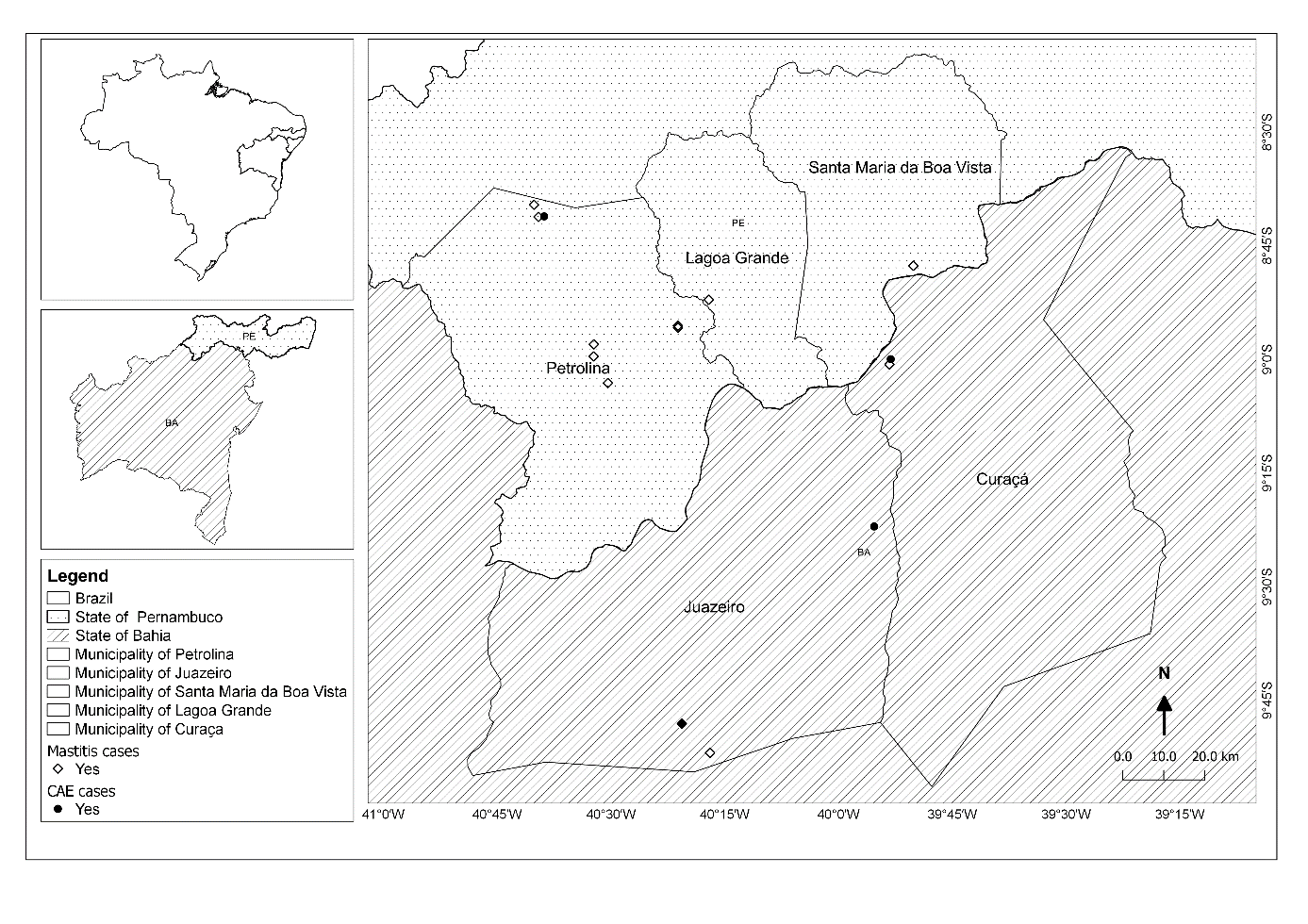Economic impact and epidemiological aspects of subclinical mastitis and caprine arthritis-encephalitis in the semiarid northeastern region of Brazil
DOI:
https://doi.org/10.21708/avb.2021.15.4.10025Resumo
Dairy activity in the semi-arid region has gained prominence due to its profit potential; however, there are still sanitary problems that result in significant economic impact. Thus, this study aimed to assess the economic impact and to conduct an epidemiological study of caprine arthritis-encephalitis (CAE) and subclinical mastitis in dairy goat herds of the semi-arid northeastern region of Brazil. The study proceeded with the collection of blood (n = 351) and milk samples (n = 321) from 15 rural properties with up to 50 animals, risk factor assessment, economic profile analysis, and georeferencing of the properties. The blood serum obtained was subjected to the AGID test. The milk samples were cultured on blood agar, and the reading was performed 24 hours after incubation. Overall, 3.4% of the animals were seropositive for CAE, and 15.8% were diagnosed with subclinical mastitis. 71.95% of the positive animals belonged to properties with a semi-intensive rearing system, weekly cleaning of the facilities, and no pre- or post-dipping. Subclinical mastitis caused by the main agent Staphylococcus spp. was associated with the breed type of the animals, highlighting two risk factors: purebred animals (OR = 12.52) and the milking performed close the soil (OR = 18.07). A reduction of up to 35.34% was observed in the income of dairy properties, constituting a considerable economic impact. Due to these sanitary problems, the economic impact demonstrates the need for a sanitary management program focused on these infirmities.
Downloads

Downloads
Publicado
Edição
Seção
Licença
Autores que publicam na Acta Veterinaria Brasilica concordam com os seguintes termos: a) Autores mantém os direitos autorais e concedem à revista o direito de primeira publicação, com o trabalho simultaneamente licenciado sob a Licença Creative Commons Attribution que permite o compartilhamento do trabalho com reconhecimento da autoria e publicação inicial nesta revista. b) Autores têm autorização para assumir contratos adicionais separadamente, para distribuição não-exclusiva da versão do trabalho publicada nesta revista (ex.: publicar em repositório institucional ou como capítulo de livro), com reconhecimento de autoria e publicação inicial nesta revista. c) Autores têm permissão e são estimulados a publicar e distribuir seu trabalho online (ex.: em repositórios institucionais ou na sua página pessoal) a qualquer ponto antes ou durante o processo editorial, já que isso pode gerar alterações produtivas, bem como aumentar o impacto e a citação do trabalho publicado (Veja O Efeito do Acesso Livre).


 Esta obra está licenciada com uma Licença
Esta obra está licenciada com uma Licença 